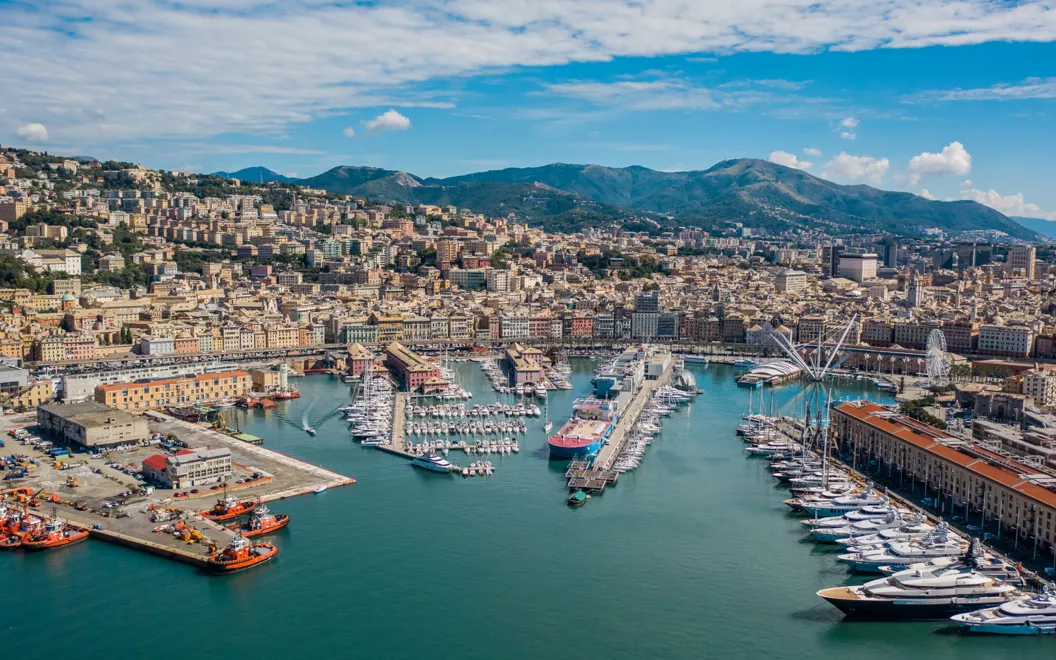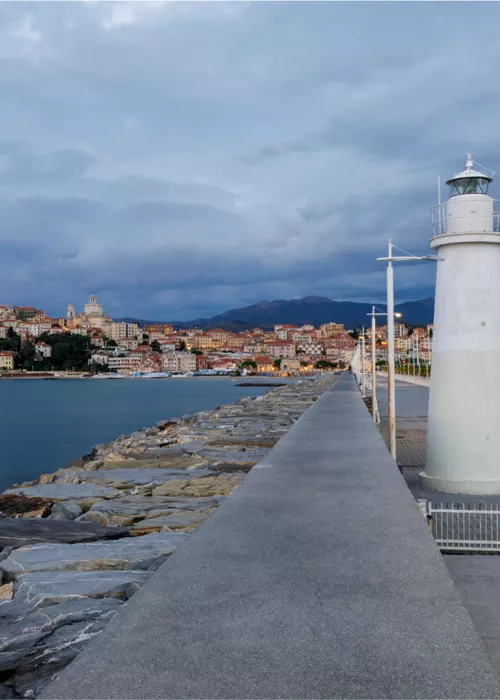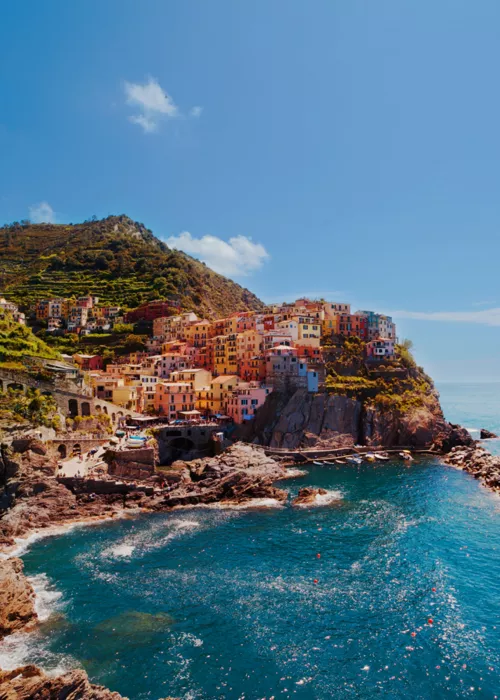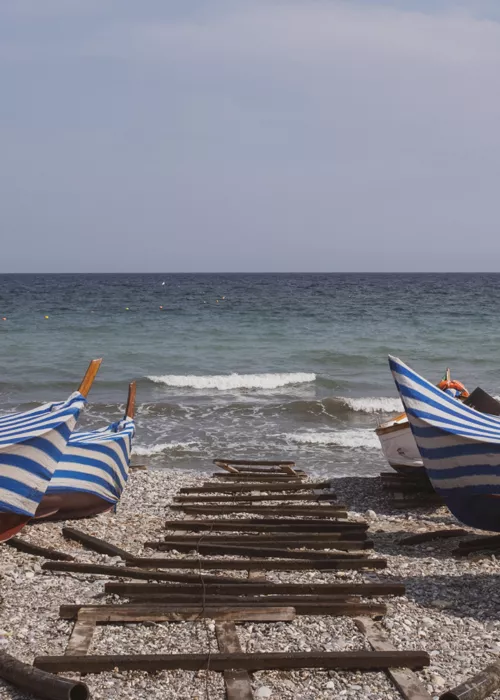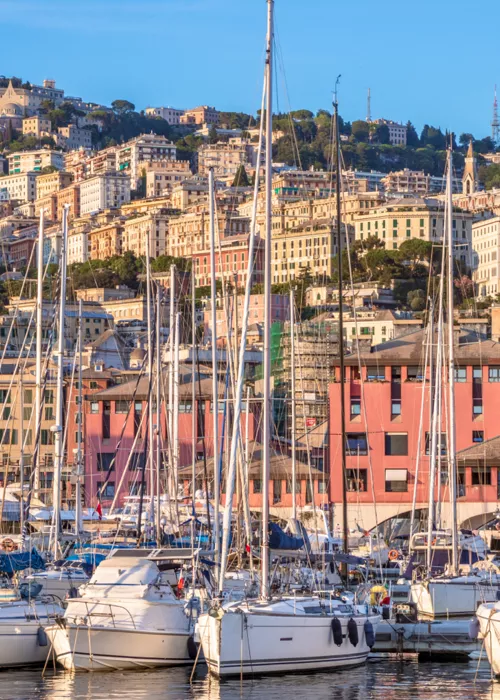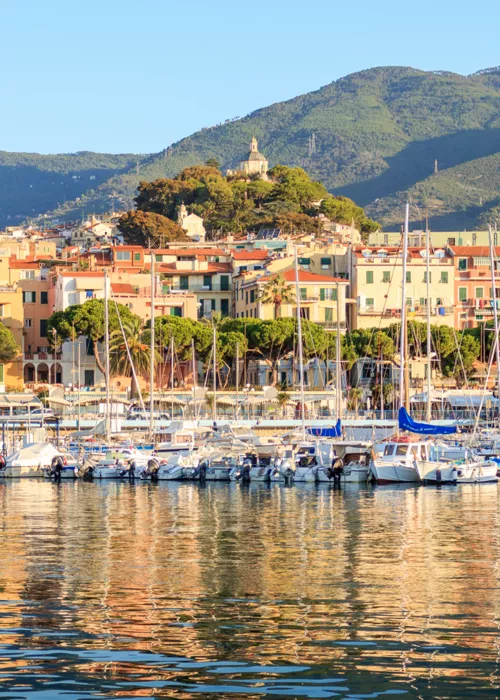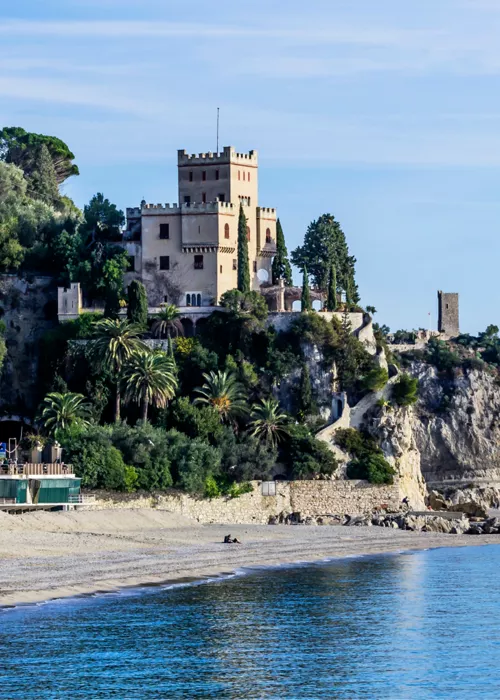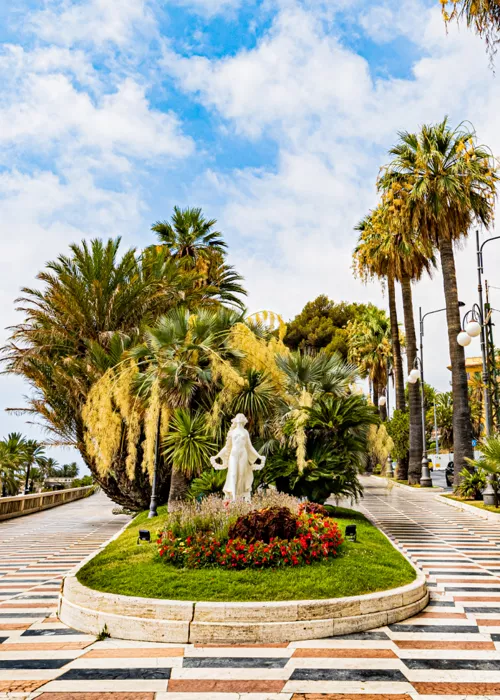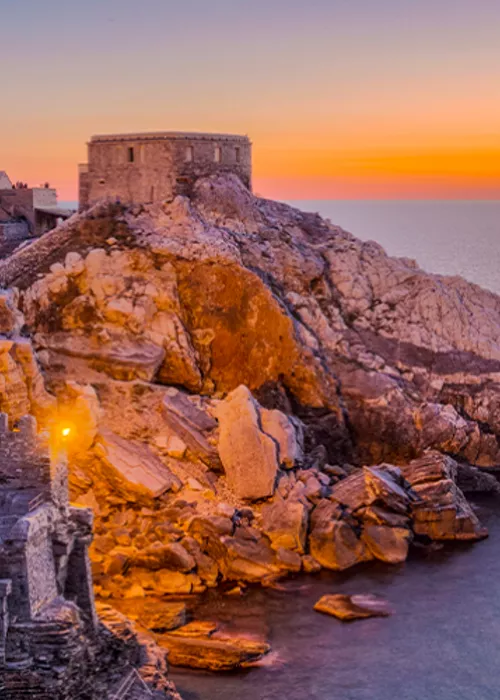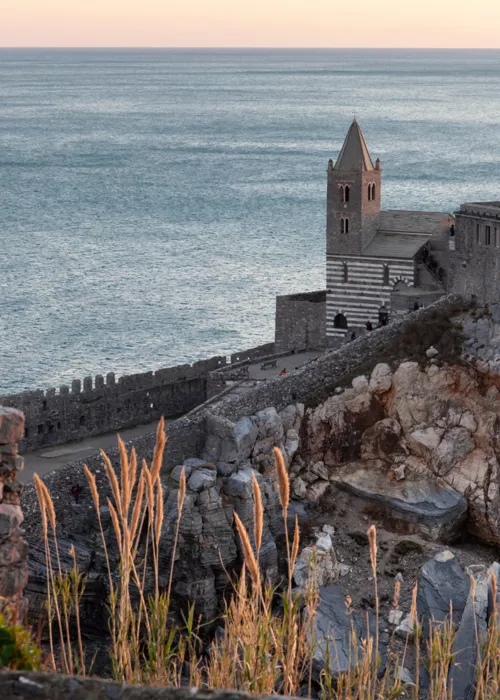Porto Antico

The tour of history and art, among ancient shops and the unique atmosphere of the "caroggi" - the alleyways of Genoa - starts in front of the sea at the Old Port, the area designed by Renzo Piano that houses the famous Aquarium. The view from the docks, renovated and transformed into a waterfront, is exceptional: you can admire the grandeur of a city that rises uphill. In this area, you'll also find the City of Children and not far away, the Sea Museum. The itinerary in the historical and ancient area starts from the church of San Marco. Strangely enough, since 1173, the year of its foundation, the church on the pier of Genoa has been dedicated to the patron saint of Venice, a bitter enemy of the Republic and a great seafaring rival. A bas-relief with the lion of St Mark, taken from the city of Pula in 1380, is placed on the side wall of this ancient Romanesque basilica. Not far away is Porta Siberia, the entrance to the pier, a masterpiece of medieval architecture that owes its name - which has never changed - to a dialectal transposition of the term "cibaria" ("food supplies"), a clear reference to the nearby grain warehouses, where the magistrates of the Republic kept the reserves to be used in case of famine. The gate was built between 1551 and 1553 to a design by Galeazzo Alessi as an insurmountable bulwark in the coastal walls. The outer side features two bastions that enclose the space of the actual gate in a pincer arrangement. The fortified inner side is characterised by a monumental portico with three arches. The section of defensive sea wall, known as the Malapaga Wall (title of the famous film in which Jean Gabin wandered through the alleyways of post-war Genoa) is still well preserved and connects the gate of the pier to the Casone della Malapaga, the debtors' prison.
Via San Lorenzo

From here, the mandatory stop is in Via San Lorenzo, the street that divides the old town in two. You'll see the cathedral of San Lorenzo, which houses the treasure of San Lorenzo and an unexploded bomb from World War II; and the Gesù church, where two paintings by Rubens will remind you that Genoa is a city full of artistic wealth. During the week, there are several guided tours of the San Lorenzo treasure, while 50 metres away is the Diocesan Museum that houses the room with the sixteenth-century "Passion Canvases" on denim fabric. The cathedral of San Lorenzo is more than a thousand years old, built in around 1098 upon a previous basilica and enlarged over the centuries with solemn and precious forms. The cathedral, dedicated to St Lawrence Martyr, houses the ashes of the city's patron saint, St John the Baptist, which were brought to Genoa at the end of the First Crusade. Today, the wonderful works of art dedicated to him are referred to as the "treasures of San Lorenzo" and set like precious gems in the monumental complex of the cathedral: his interrogation by the emperor in the frescoes by Lazzaro Tavarone in the apse, his martyrdom depicted in the wooden inlays of the sixteenth-century choir. Guided tours are often organised to the top of the cathedral's loggia tower, with a walk along the rooftop walkway, on the Via Reggio side, as far as the foot of the dome.
Piazza De Ferrari

A stone's throw away is Piazza De Ferrari, which, with its large, central fountain, is a meeting point for everyone. Overlooking the square is the Doge's Palace, with its large exhibitions, and the Carlo Felice Opera House. This is the beating heart of the city, where it's worth stopping for an aperitif or a traditional focaccia breakfast, depending on the time. Around the square, where people meet up at all times throughout the year to decide where to go and what to do, there are three locations in particular that are worth a visit.
Starting with the Doge's Palace, a treasure trove of the city's art and culture. Here the most important exhibitions of the year are staged, attracting visitors from all over. The palace itself, with its monumental staircases, noble floors and majestic terraces, merits a calm and attentive visit. This was the residence of the Doge, who was elected as ruler by the Genoese patrician families. Here you find the Grimaldina Tower, one of the symbols of the city. The tower was Genoa's prison for a long time and is now open every day for fascinating guided tours. Also on Piazza de Ferrari is theAccademia Ligustica di Belle Arti [Ligurian Academy of Fine Arts] with its museum: established in Genoa in 1751 on the initiative of a group of Genoese artists and aristocrats gathered around the Marquis Francesco Doria, the Academy is located in an elegant neoclassical building, built to a design by the civic architect Carlo Barabino. The establishment of a "Gallery of Genoese school paintings" for teaching purposes dates back to the early 19th century and is linked in particular to the initiative of the Marquis Marcello Durazzo.
Via Roma

In a couple of minutes you can reach Via Roma and Via XXV Aprile, shopping streets and an ideal connection with the fantastic Via Garibaldi, formerly called Via Aurea and Strada Nuova. Walking along the latter, you are surrounded by the famous Palazzi dei Rolli, a UNESCO heritage site. These buildings were built between the 16th and 17th centuries in what historians describe as "the Century of the Genoese", recalling the economic power of Genoa at that time. In spring and autumn, some private buildings also open to the public, on the occasion of the Rolli Days. On 13 July 2006 the site "Genoa: the new streets and the system of the Palazzi dei Rolli" was added to the UNESCO World Heritage Convention List. It preserves unitary urban spaces from the late-Renaissance and Baroque periods, flanked by over a hundred buildings of noble city families. The largest residences, varied in shape and distribution, were registered in official lists - the "Rolli" - to house illustrious figures during state visits. The Palazzi dei Rolli, often erected on slopes, are arranged in an atrium-courtyard-staircase-garden sequence have have richly decorated interiors. They express a unique social and economic identity that inaugurated the urban architecture of the modern era in Europe. Today, there are 42 Palazzi dei Rolli: the UNESCO heritage buildings also include the city's most prestigious museums, which house extremely important works of art.
The Alleyways

Along the way you can explore the alleyways – caroggi – and enter the alluring maze of the old town, full of small restaurants with an aroma of pesto and basil. The alleyways, which the Genoese people call caruggi, are there to be discovered, and over the centuries they have inspired and enchanted poets, writers and songwriters, from Anton Chekhov to Fabrizio De André. It is certainly worth taking a stroll along Via del Campo, immortalised by the Genoese singer-songwriter De André. Every year, many fans, of all ages, come to Genoa to follow in the footsteps of the poet-songwriter and find ancient medieval houses and the scents of the historic centre here.
There is also a unique shop, 29 Rosso, founded by Gianni Tassio, a childhood friend of Faber's, that has become a sort of De Andrè museum. The street and its surroundings contain unique and ancient treasures. It starts along the western portion of the medieval city, at the beautiful Porta di Vacca. Following Via del Campo and the adjacent alleyways and squares, it is easy to find the places of the ancient consortia, which – as in the case of the Piccamiglio family – still preserve strong towers placed over archways to defend the palaces and noble churches. Among these, the small church of San Marcellino, a very rare example of a structure dating back to the 11th century, is still intact. Not to mention the 18 buildings listed by the Superintendence, such as the splendid Palazzo Cellario. There is also the infamous column of the Vaccheri, a noble family that had the dishonour of having a scion condemned for serious acts against the Republic. The work to be started, costing over three million euros, will restore these hidden wonders to the light.

